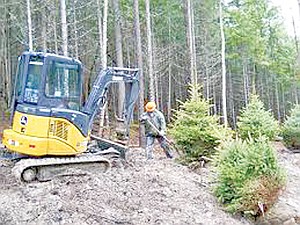UM study: State logging industry still faces many challenges
University of Montana researchers found that key factors for Montana’s forest products industry improved little during 2011.
After falling steeply during the recession and 2010, lumber production, employment of mill workers and wages stabilized somewhat but at levels about half of what they were during the peak year of 2005.
Todd Morgan, director of forest industry research at UM’s Bureau of Business and Economic Research, said the slow recovery from the recession and ongoing U.S. housing slump are still affecting Montana’s forest products industry.
“Montana’s forest industry will continue to deal with a combination of local and regional factors that make major recovery in the near term unlikely,” he said.
Lumber production at Montana sawmills in the fourth quarter of 2011 fell to approximately 121 million board feet, down 8 percent from the third quarter of 2011.
Total Montana lumber production for 2011 was approximately 499 million board feet, down about 1 percent from 2010. Compared with 2005, when U.S. housing starts were at their peak, Montana lumber production in 2011 was down 50 percent.
According to BBER’s quarterly reports on the industry, the number of production workers employed in Montana mills during the fourth quarter of 2011 was 1,567, off by less than 1 percent from the third quarter of 2011. Approximately 2,050 (57 percent) fewer production workers were employed in Montana mills during 2011 than during 2005. Job losses from curtailments and permanent mill closures during the post-boom period continue to be reflected in the state’s forest industry employment figures.
Production wages at mills remained stable during the fourth quarter of 2011. Wages were $14.2 million during the fourth quarter of 2011, versus $14.5 million during the third quarter. The quarter-to-quarter drop in wages is largely due to shortened holiday work weeks, temporary curtailments and other efforts by mills to keep costs down while still retaining employees. Total 2011 production wages were $57.5 million, up approximately 2 percent from $56.3 million in 2010.
Log prices in Montana have remained relatively flat the past three years.
The expected demand for logs at Montana mills over the next 60 days is good, while mills deal with the continued lack of demand for their finished products.
Local log prices have not risen as much as in the Pacific coast region, which enjoys ready access to international log markets. Montana mills could face higher log prices from competition with exporters.

